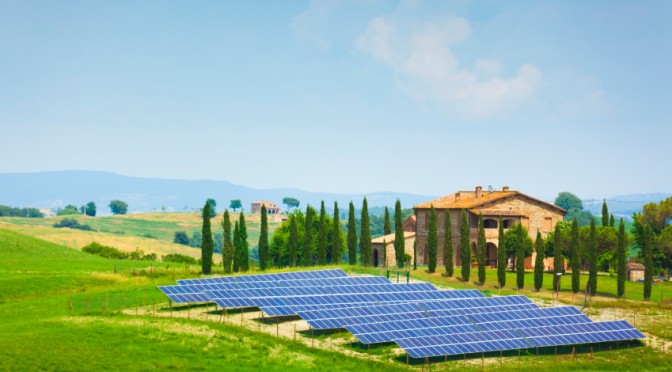The German bank has raised its 2013 global solar demand forecast to 30 GW – representing a 20% year-on-year increase – on the back of suggestions of strong demand in markets including India, the U.S., China (around 7 to 10 GW), the U.K. (around 1 to 2 GW), Germany and Italy (around 2 GW).
The key for Deutsche is the emergence of unsubsidised markets in many key countries.
It points, for instance, to India, where despite delays in the national solar program, huge demand for state based schemes has produced very competitive tenders, in the [12 cents per kilowatt hour] range. Given the country’s high solar radiation profile and high electricity prices paid by industrial customers, it says several conglomerates are considering large scale implementation of solar for self consumption.
“Grid parity has been reached in India even despite the high cost of capital of around 10-12 percent,” Deutsche Bank notes, and also despite a slight rise in module prices of [3 to 5 cents per kilowatt] in recent months (good for manufacturers).
Italy is another country that appears to be at grid parity, where several developers are under advanced discussions to develop unsubsidized projects in Southern Italy. Deutsche Bank says that for small commercial enterprises that can achieve 50 percent or more self consumption, solar is competitive with grid electricity in most parts of Italy, and commercial businesses in Germany that have the load profile to achieve up to 90 percent self consumption are also finding solar as an attractive source of power generation.
Deutsche bank says demand expected in subsidised markets such as Japan and the UK, including Northern Ireland, is expected to be strong, the US is likely to introduce favourable legislation, including giving solar installations the same status as real estate investment trusts, strong pipelines in Africa and the Middle east, and unexpectedly strong demand in countries such as Mexico and Caribbean nations means that its forecasts for the year are likely to rise.
Rooftop installations are, in particular, expected to be a main focus, says Deutsche Bank. A trend for projects being planned with either “minimal/no incentives” has also been observed, despite the belief that solar policy outlooks are improving, particularly in the U.S., China and India, and “other emerging markets”.
Looking at India, Deutsche Bank predicts that due to state and RPO programs, demand is likely to be strong, at between 1 to 2 GW. Meanwhile, it says, “grid parity has been reached in India even despite the high cost of capital of ~10-12%.”
With system prices between €1,500 to €2,000/kW, net metering for systems below 200 kW and “advanced” plans for unsubsidized projects in the south of the country, Italy also “appears to be at grid parity”. “Assuming small commercial enterprises are able to achieve 50% or more self consumption, solar is competitive with grid electricity in most parts of Italy,” says Deutsche Bank.
With robust demand in the U.S., Deutsche Bank forecasts a residential solar market of around 1 GW and a commercial market of between 1.5 to 2 GW.
Meanwhile, although solar demand in Germany is said to be seasonally weak, Q2 is expected to see an increase, specifically in the small commercial segment. Overall, however, the bank believes 2013 growth could be inhibited – around 3 to 4 GW – due to less ground-mounted systems and no summer rush.
Prices
Deutsche Bank states that utilization rates in China are on the increase, as are polysilicon, wafer and module prices. In particular, with an “improving” supply outlook, it predicts that polysilicon pricing will be kept under control, although prices are expected to remain below US$25/kg. This trend should see companies like Wacker Chemie and Hemlock ramp utilization rates back up.
In terms of crystalline silicon modules, says Deutsche Bank, Chinese tier-1 prices have been increasing by between $0.03 and $0.05/W. Consequently, it says, Chinese module prices are over $0.60/W, while European module prices are over $0.70/W.


